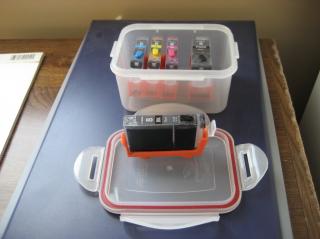- Thread starter
- #11
mrelmo
Print Addict
ok i will try the hot glue trick, and thanks for the link about sealing the cartridge completely for shipping, not to get side tracked, as far as shipping goes what about placing the refilled cartrides in a small tupper ware style box you can see in the attached image that there is a gasket on the cover, would that counter the change in air pressure?


